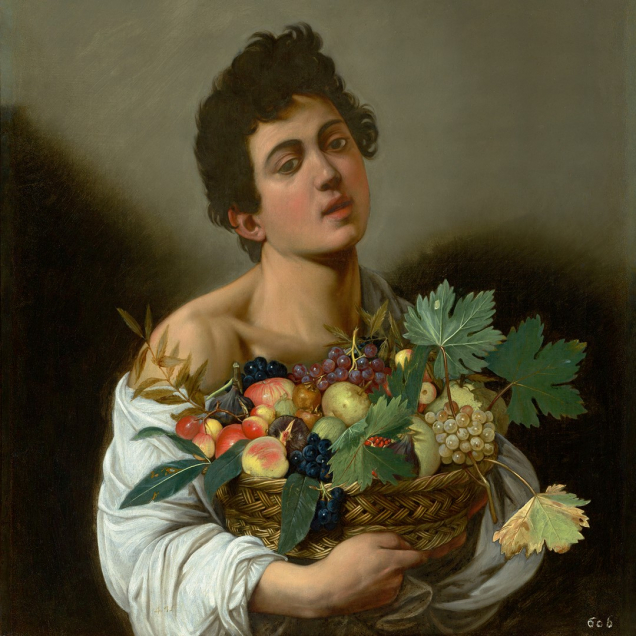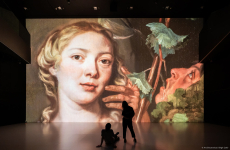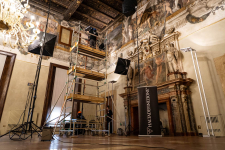On July 18, 1610, died an illustrious and tormented artist: Caravaggio.
There are several theories on the exact place of his death: the most quoted to date is Porto Ercole, in the province of Grosseto. Here, thanks to archive documents and recent anthropological surveys, the University of Bologna would have identified his remains with a probability of 85%.
Is this really Caravaggio?
To remember the artist that revolutionized Seventeenth-century art, two new paintings in Gigapixel, currently held at the Galleria Borghese in Rome, are now available in the Haltadefinizione image bank.
Madonna and Child with St. Anne (Pala Dei Palafrenieri): dated 1606, the altarpiece, commissioned by the confraternity of the Palanfrieri, was moved several times before being purchased by Scipione Borghese. From the dark background emerge three dynamic figures that divide the space into two parts. The Virgin and the Child are crushing the serpent, symbol of the original sin, while isolated on the right we find St. Anne. The Immaculate Conception by Caravaggio was subject to disapproval and admiration at the same time, a characteristic of his paintings.
Boy with a Basket of fruit: the three-quarter portrait of this young man, carrying in his arms a basket full of autumn fruit, strikes the spectator thanks to its intense realistic details. The absence of symbols or specific features distances the boy from iconographic models.
It was probably painted when Caravaggio worked at the workshop of Cavalier d'Arpino.
The story of its entrance into the Borghese Collection is curious: Cavalier d'Arpino was imprisoned on the accusation of possessing weapons, and the bail was paid in the form of a group of artworks to the Camera Apostolica (Apostolic Chamber) - including this valuable painting by Caravaggio.
Pope Paul V donated it to Scipione Borghese, his nephew, who is rumored to have orchestrated the arrest in order to get his hands on these artworks. His reputation as a refined collector is well known, and the doubt is legitimate.



